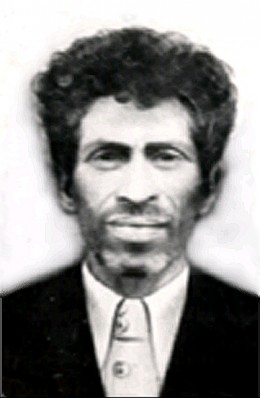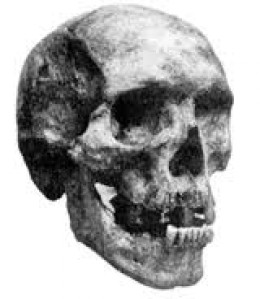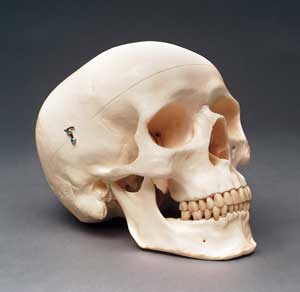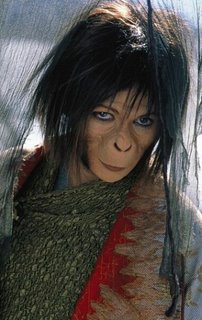I was wondering about the recent debate over the Ketchum DNA study, browsing around to see if there were any substantive developments. There aren’t, just a lot of opinions and pointless debate, but if something comes up, fear not it will appear in these pages.
However in the search I came across a case that is no less interesting however you look at it; if it should be a crypto-zoology case or just a sociology case. This is the story of the nineteenth century in a fairly remote, at that time, region of Russia.
The year is 1850. The place is the Ochamchir region of Georgia in Russia. A group of local hunters are prowling through the forests in search of whatever they can find – What they DO eventually find, shakes their beliefs to their foundations and leaves the world with an enigma that has yet to be explained.
What they saw appeared to be human – and yet not human. It seemed to be young and female with ape-like features. Her arms,legs,and fingers were unusually thick. her bosom was described as “Massive” and she was covered with thick dark hair. She was also said to be absolutely ferocious, nevertheless, the hunters managed to capture her alive and brought her to the isolated mountain village of T’khina fifty miles from Sukhumi, where she was given to a nobleman called Edgi Genaba.
So violent and ferocious was she, that for the first three years after her capture she was kept in a cage where she dug herself a hole to sleep in. The village people were terrified of her rages and would not venture near – food was thrown to her.
Over the course of time, she became tamer and eventually, domesticated. She was given the name Zana, and was moved to a wattle enclosure, tethered at first but later was released and allowed to roam free, but she never wandered far from the place where she was fed. She eventually learned some simple tasks such as grinding corn and carrying wood, but never mastered a single word of speech, her only utterances being grunts and – if angered – howls.
The women of the village remained scared of her – she could be ferocious and bite when angry – and would only come near if she was in a happy mood. Her Master Edgi Genaba, however could control her and she would react with fear if he shouted at her..
Among the theories concerning Zana’s origins is one that she could be an Almas – A sort of Soviet Bigfoot – there are many anecdotal stories of such creatures having been sighted in the area she was captured. Another theory put forward by Professor Boris Porchnev of the Moscow Academy of Sciences is that she was actually a member of the remnants of a Neanderthal race that still survives in the mountainous areas of Russia.
While there are people who equate the Alma to bigfoot, it is my opinion that this is a mistake. While both are believed to be hominids the Alma, known across central Asia from the Caucus mountains to Mongolia, are of a normal human stature from five feet to six and half feet tall. They are also reported to wear rudimentary clothing and by some reports trade with nomadic Mongolian herders by leaving goods in preset locations. While all of these reports are anecdotal, they also do not entirely match with anecdotal Bigfoot behavior. Nor do any of these reports offer evidence that Zana was an Alma, or a relict neanderthal, or other human ancestor or offshoot.
Zana is said to have died in 1890 and the whereabouts of her skeleton is not known, so a forensic examination of her remains is not possible. Her children, however, are a different matter.
Zana’s children were said to be dark-skinned, very strong and slightly strange looking, but despite some unusual psychological features, could learn, and speak and were regarded as relatively normal.One of her youngest children, her son Khwit (who’s father according to rumour, was Edgi Genaba himself), died in 1954. He was incredibly strongly built, and had dark skin, but apart from these two attributes, he seems to have inherited most of his facial features from his father.

Zana’s son Khwit
And Khwit’s Skull

By comparison a male human skull

Khwit’s skull was given to Anthropologist M.A.Kolodieva who compared it to other typical male skulls from Abkhazia who found it to be significantly different from them. She Wrote:
“The Tkhina skull exhibits an original combination of modern and ancient features … The facial section of the skull is significantly larger in comparison with the mean Abkhaz type … All the measurements and indices of the superciliary cranial contour are greater not only than those of the mean Abkhaz series, but also than those of the maximum size of some fossil skulls studied (or rather were comparable with the latter). The Tkhina skull approaches closest the Neolithic Vovnigi II skulls of the fossil series…”
It is difficult for me to tell from these pictures whether there is a significant difference between Khwit’s skull and what is within normal human variation, but I fell compelled to note that the science of phrenology has been very popular and highly disputed over the years and am forced to wonder in what manner analysis of Khwit’s skull was performed. That is just my opinion.
For those wondering:
From Phrenology.Org
Phrenology is the science which studies the relationships between a person’s character and the morphology of the skull. It is a very ancient object of study. The first philosopher to locate mental faculties in the head was in fact Aristoteles.
Several typologies have been defined, linking physionomy with character. The study of the face, physiognomony, has been particularly studied by the 18th century Swiss author Lavater.
Who or what was Zana?
Reports of feral children come from around the world and throughout history. Some have been confirmed as with Viktor of Aveyron, France. Viktor’s story was made into a movie, rather loosely based upon the story and idealizing his rather sad later life, but still it is a confirmed case of a child who grew up and survived living in the wilderness, naked and alone for many years. Viktor loved the outdoors and was known to prefer to play in the snow naked. Much as Zana is described. Other stories go back to the inspiration for Rudyard Kipling’s Mowgli of “The Jungle Book” and the origins of Rome in the mythological Romulus and Remus, two human children who were nursed by a female wolf.
Now at this point it is tempting to say that someone who lives out in the wilderness for all intents and purposes as an animal will demonstrate the physical strength of an animal in a way that might seem impressive to a more civilized human. Animals do not always show the same restraint that humans do when instincts tell you to use everything you have to survive. But then it is important to remember we are not talking about the typical human of our modern world when making comparisons to Zana, we are considering the observations of rural Russian peasants who work with their hands and perform hard physical labor. Most of us today would be left exhausted by a typical work day for a farmer of the late nineteenth century for whom technology has probably not changed much since medieval times. Those people were tough in a way most of us can hardly fathom. That is still no reason to attribute inhuman origins to a case like Zana’s.
The reports of her features being “apelike” could possibly be explained as birth defects which may not have been recognized in a largely illiterate and uneducated population. Birth defects that could very possibly be the reason a child was left to fend for itself in the wilderness.
According to a study done for National Geographic by Isogg.Org
Zana and Khwit
DNA extracted from skulls purported to be Zana, and her son, Khwit, were profiled on the National Geographic Channel show “Is It Real” Russian Bigfoot. The question testing sought to answer was whether the supposed “Almas”, were really Neanderthals who survived into modern times. Mitochondrial DNA analyzed from both skulls confirms a shared maternal line ancestor of human origins, with no Neanderthal mutations.
What is the more interesting story? That Zana, assuming the possibility the wrong skulls were tested, may have been living Neanderthal? Or that she was a woman who survived living as an animal in the Russian wilderness for who knows how long?
If you are interested in the story of Viktor of Aveyron, look for the Francios Truffaut film “L’Enfant Sauvage” (marketed in the UK as The Wild Boy and in the US as The Wild Child) also seen in an episode of “In Search Of.”
[email protected]
Don’t forget to LIKE us on our Facebook Page Where you will find hints about what is going on here as well as other content updated frequently





